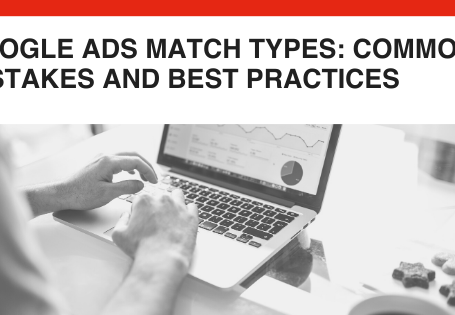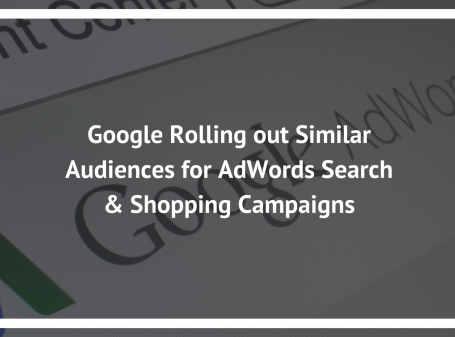What is a Good Click-Through Rate for Google AdWords?
By: Rank Media

It’s not a stretch to say that Google has revolutionized online advertising and pay-per-click advertising through their AdWords platform. In 2016, AdWords was responsible for a significant portion of Google’s $89.5 billion revenue. By providing a multitude of advertising options, the service allows businesses to target web users that would most likely be interested in their product, and advertisers pay when the ad is clicked on. Whether it’s product-driving advertising through Shopping campaigns, image-based advertising through Google’s Display Network, or the traditional search ads, Google has developed the Swiss Army knife of media buying platforms. Of course, if you’re new to the advertising realm, you may have some questions regarding the efficacy of your marketing efforts and whether or not your Google AdWords campaigns are truly optimized.
How Effective is my Ad?
Like any other advertising tool, your campaign needs to be targeted to a specific audience and efficient to be successful. One way to ensure that your Google AdWords campaign is up to snuff is by monitoring click-through rates (CTR), which measures the number of times your ad is clicked versus the amount of time it’s served. You can measure the CTR of your campaigns on the whole, or dig deep into the data to measure the CTR by ad or keyword to evaluate which campaign components are not yielding the best results.
As you only pay for the clicks registered on your, a low CTR rate may not sound cataclysmic, but it can be highly problematic and indicative of severe issues adversely affecting your conversion rates. One of the worst consequences of a low CTR rate is that your cost-per-click (CPC) could be driven up due to low-quality scores, which are determined by the expected click-through rate, landing page relevance, and ad relevance. The intricate bidding system developed by Google considers a myriad of factors in determining the final amount you pay for a click. In the bidding process, a higher quality score and ad rank can result in an advertiser in the first position to pay less for a click than an advertiser in the third position. While this may seem unfair, it’s Google’s way of rewarding businesses that take the time and effort to optimize their campaigns.
What is an Average CTR?
WordStream states that a click-through rate of 2% is considered average although it varies according to the industry. A 3% CTR rate would be considered excellent for ecommerce, real estate, and law, with each of them having an average rate just below 2%. However, if your company specializes in dating and personals, a 3% rate would be just average. Of course, the average CTR depends on the match type you’re bidding on. If you’re bidding on exact-match keywords and have an average position in the top two spots, a CTR of anything less than 5% would be indicative of a disconnect between the keyword and ad copy.
How can I Increase my CTR?
A major factor influencing CTR is ad placement, and this is decided by your keyword quality score. Improving this should be your main priority. To improve your keywords, try grouping them into specific baskets. Ideally, you should have no more than five-ten keywords per ad group. In certain cases, single keyword ad groups (or even campaigns) may help you better allocate spend should specific keywords dominate your budget. Depending on the match type of your keywords, you may also need to analyze search terms and actively add keywords to your negative keyword list, which prevents your ads from being triggered by specific searches. For example, if your keywords are set to phrase and/or broad match, chances are a good percentage (probably 50% and more) of the times your ad has been served has been for irrelevant search terms related to your business. Bidding on keywords on an exact match basis can help you reduce CTR and increase campaign performance.
Stay Relevant
People browsing the web have a good sense of when something isn’t relevant. This is why it’s essential to make sure your keywords are highly relevant to your ad. Your target keyword for the ad should be extremely specific, and it should be in the title, description and URL address for your ad. For example, if you’re bidding on the keyword “iPhone accessories”, don’t throw people off by talking about Android devices in your ad copy. Also, make sure your landing page is efficient, well-designed and loads quickly. The landing page you choose for each ad group should be highly relevant to the keywords you’re bidding on within each campaign. A common issue found in certain campaigns is the decision to make the home page the landing page for all types of keywords. Please don’t make this mistake. You’ll get the same output by throwing your money into a furnace. Let’s say someone is searching for record frames for their apartment. This means they want a very specific kind of frame, one that perfectly fits a vinyl album. The landing page after clicking on the ad for record frames should lead them directly to where they can buy record frames, not a home page where they have to make a search.
For expert advice on how to maximize your CTR rate for Google AdWords campaigns, consider Rank Media. We’re specialists in internet marketing and online advertising. We’ll help you lay the foundation for a strong online presence. Oh, and we’re pretty damn good at media buying.







 (800) 915 7990
(800) 915 7990
